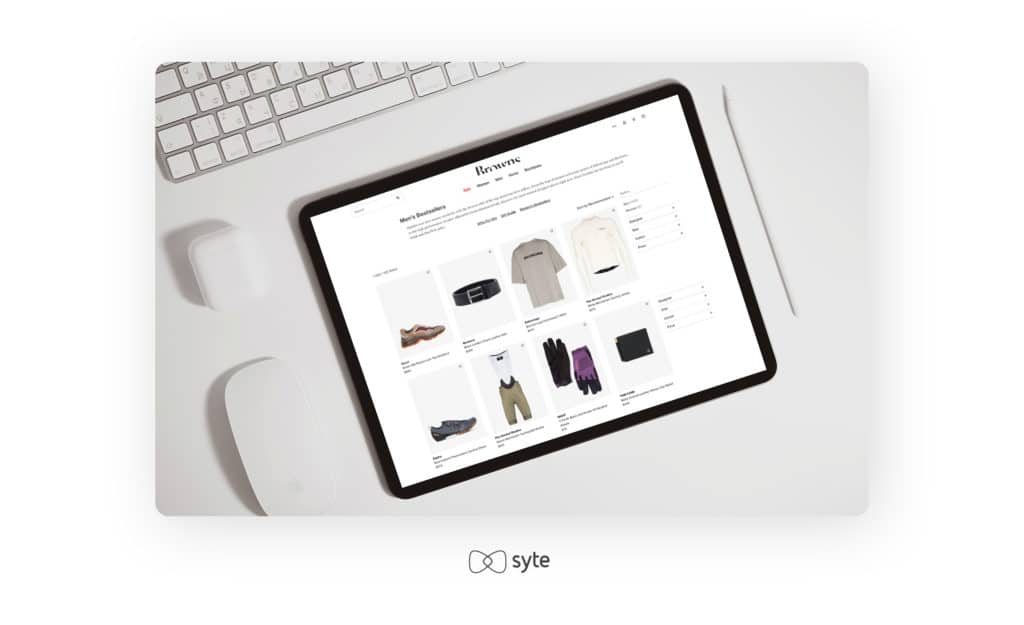eCommerce brands are always striving to improve their performance, but how do you define what good performance looks like? If you’re in the business of online shopping, you know that it is about evaluating outcomes against quantifiable metrics.
For eCommerce businesses, common KPIs like time on page, drop-off rate, page views, number of items added to cart, cart abandonment rate, conversion rate, and average order value (AOV) are just the tip of the iceberg.
Assessing good performance is linked to A/B testing. If you test display search results and performance drops as a result, what used to be “good” performance by industry standards, could now be considered subpar for your site.
In this post, we’re going to explain what A/B testing is all about, why it’s important for eCommerce brands today, and provide seven examples of valuable A/B tests to raise your standards.

What Is A/B Testing?
A/B testing, often referred to as split testing, is the process of comparing how two different elements on your eCommerce site impact performance for a specific goal. It allows you to test the performance of a variation on your website among a sample population of shoppers.
Think of A/B testing as a test drive for change. For example, you may have a theory that green “Add-to-Cart” buttons will be more effective than gray ones. Instead of rolling out sweeping changes based on a hunch, A/B testing allows you to trial your theory on a small portion of shoppers.
This enables you to:
- Accurately attribute differences in performance to specific elements (e.g., the color of a CTA button)
- Make effective changes based on real data
- Avoid frequent updates across your entire website
A/B testing is not a one-and-done — it’s an iterative process. One test opens the door to more so you can continuously optimize a wide scope of elements on your site.
Why A/B Testing Is Important
A/B testing helps you keep up with consumers’ shifting preferences and shopping behavior. To stay relevant among your target shoppers, you need to offer the right products and online experience.
Factors like site colors, product image layouts, how much text you display, where you feature collections, and the number of checkout steps could all change over time.
Changing seasons, stock levels, trends, and unforeseen events can cause changes that should be tested first. Continuously testing new variations on your eCommerce site creates a roadmap for boosting conversion rate (CVR), AOV, customer retention, sales, and profits.

7 A/B Test Examples for eCommerce Brands
The beauty of A/B testing lies in enabling eCommerce companies to make data-based decisions. Instead of opting for intuitive changes, you can test ideas according to what works for your shoppers.
Here are seven areas where A/B tests can help your eCommerce business.
1. Merchandising
Merchandising is so much more than building an aesthetic layout to display your eCommerce products online. It’s a measured science that involves carefully balancing shopper engagement with highlighting products you need to sell.
As seasons change, inventories shift, and different business goals arise, your merchandising strategy should be one of the first things to keep pace. Merchandising tools that allow you to configure different parameters make it easy to test variables and measure outcomes. These include high or low stock/size availability, high profit margin items, new or old items, products with positive reviews, best sellers, recently trending pieces, and more.
You could run a test to determine how much attention to give to personalization relative to other parameters like stock availability and profit margins. This kind of A/B testing helps you strike the perfect balance, so you can provide engaging and personalized shopping experiences while increasing exposure to profitable items.
2. Site Search
Site search is fundamental to both the shopping experience and product discovery. A/B testing site search capabilities helps you clarify which search experiences best support the customer journey.
For example, if you are considering adding a visual search tool, you can test it among a small portion of your shoppers to understand its impact on key metrics such as the number of items added to cart, conversion rate, and AOV.
You can also test various visual elements of textual search, including whether to add product suggestions or inspiration boards when a shopper begins typing in the search box. By assigning this feature to 10% of your audience, you can measure how frequently shoppers engage with suggested products and decide whether it’s worth rolling it out for all shoppers.
3. Page Layouts
The way you display headlines, product images, menus, and information all influence the quality of your customer journey and, ultimately, your ability to convert shoppers.
A/B testing can help maximize your homepage real estate. Where is the best place to highlight your new collection? What headline will get people to click on your sale section? Does personalized text on-screen keep shoppers engaged longer? A/B testing can guide you towards determining the best layout to promote your business goals.
4. Types of Images
We all know that high-quality images are key to attracting shoppers and increasing the add-to-cart frequency. But how do you know which type of image works best?
You could go for standard branded images featuring models wearing your clothes, shoes, or jewelry. If you’re a home decor brand, you could display your furniture in curated showrooms. User-generated images from well-known influencers are another option for social commerce appeal.

So, which type of image will drive shoppers to click “Add to Cart”?
A/B testing different approaches across small shopper segments can give you a clear idea of which strategies work best for your audience.
5. Pricing
Shoppers typically want to know how much they need to pay in taxes, shipping, and returns ahead of time. Presenting this information at the right time, will motivate your shoppers to add more to their carts and make a purchase.
If it’s unclear that you don’t offer free shipping until checkout, then shoppers will likely abandon their carts. The same applies for international buyers who may want to know about import and customs costs from the get-go.
Should you display shipping costs on the homepage, or on product detail pages? Should you ask shoppers where they are located, and calculate fees before they begin their journey or midway through? A/B testing helps you take a data-backed approach to answer these questions.
6. Email Marketing
Email marketing enables you to maintain communication with shoppers, update them on promotions, and send abandoned cart reminders. Many facets of email marketing can be A/B tested, including subject lines, email frequency, timing, and CTAs.
To make sure your email campaigns drive traffic to your site and increase conversion, you’ll want to test your emails until you get the results after.
Promotions drive conversion, off-load slow-moving inventory, and prepare your brand for new seasons and collections. You can A/B test a variety of elements related to promotions.
For example, should you dedicate promotion space on your homepage, or have a “Sale” section on your menu? Should your promotion have a theme, or contain every marked-down item on your site?
After determining which layouts, texts, images, and titles help you achieve your goals, you can scale these areas for your entire audience.
How Good is Your “Good”?
Once you figure out how to run and assess your A/B tests, you’ll realize that these data-driven experiences are invaluable to your eCommerce success. They help you keep up with shifting consumer behavior, boost performance, and offer a competitive digital experience.